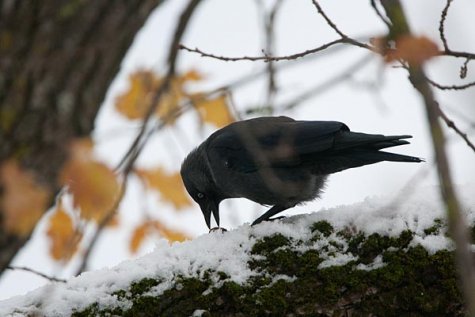Forest Camera News
All Forest Camera News here. Latest articles below:
Jays on feeding ground
Web camera image recorded by Shanta, LK forum
Photo: Arne Ader
Translation: Liis
The jays, who belong to the corvid family, are wise enough to collect winter stock for themselves; the prerequisite is of course the shape and strength of the beak – other birds find it much more difficult to come to grips with the oblong, smooth and hard-shelled acorns. The elastic gullet of the jay allows a bird to gobble up to 8 acorns but such a weight has an effect even on the flight view of the bird – the tail end rises higher. When the acorns have been gathered the surroundings are quickly checked out and a little false flight is undertaken so that other interested parties should not notice where the acorns are buried. A disturbed jay evicts its heavy load in flight. Acorns are prized by many forest inhabitants: among the smallest rodents bank voles and yellow-necked mice; squirrels of course, roe deer, but they are a particular favourite of boars.
By now the one-seeded acorns have become brown-coloured, the chlorophyll in the acorn shells has decomposed and biochemical changes in general took place in the acorn in autumn. On ripening the water content decreased, the content of starch increased to almost 50 % and the acorn became richer in oil and fat. For “flavour” there are tannins, and furthermore fibres and mineral compounds. Acorns will not satisfy the need of proteins. But why tell a long story – 100 grams of acorns provides the forest inhabitants with 250 kilocalories of energy.
Nearly 10 jays are busy in the forest camera view .
Jackdaw with acorn










